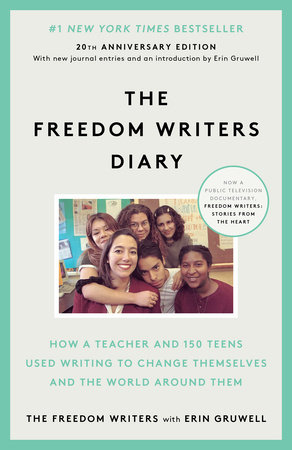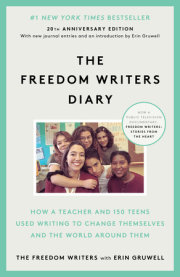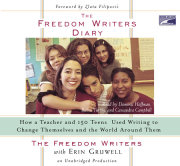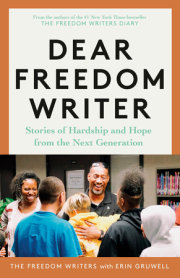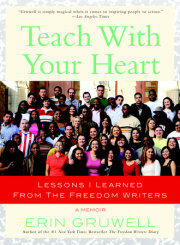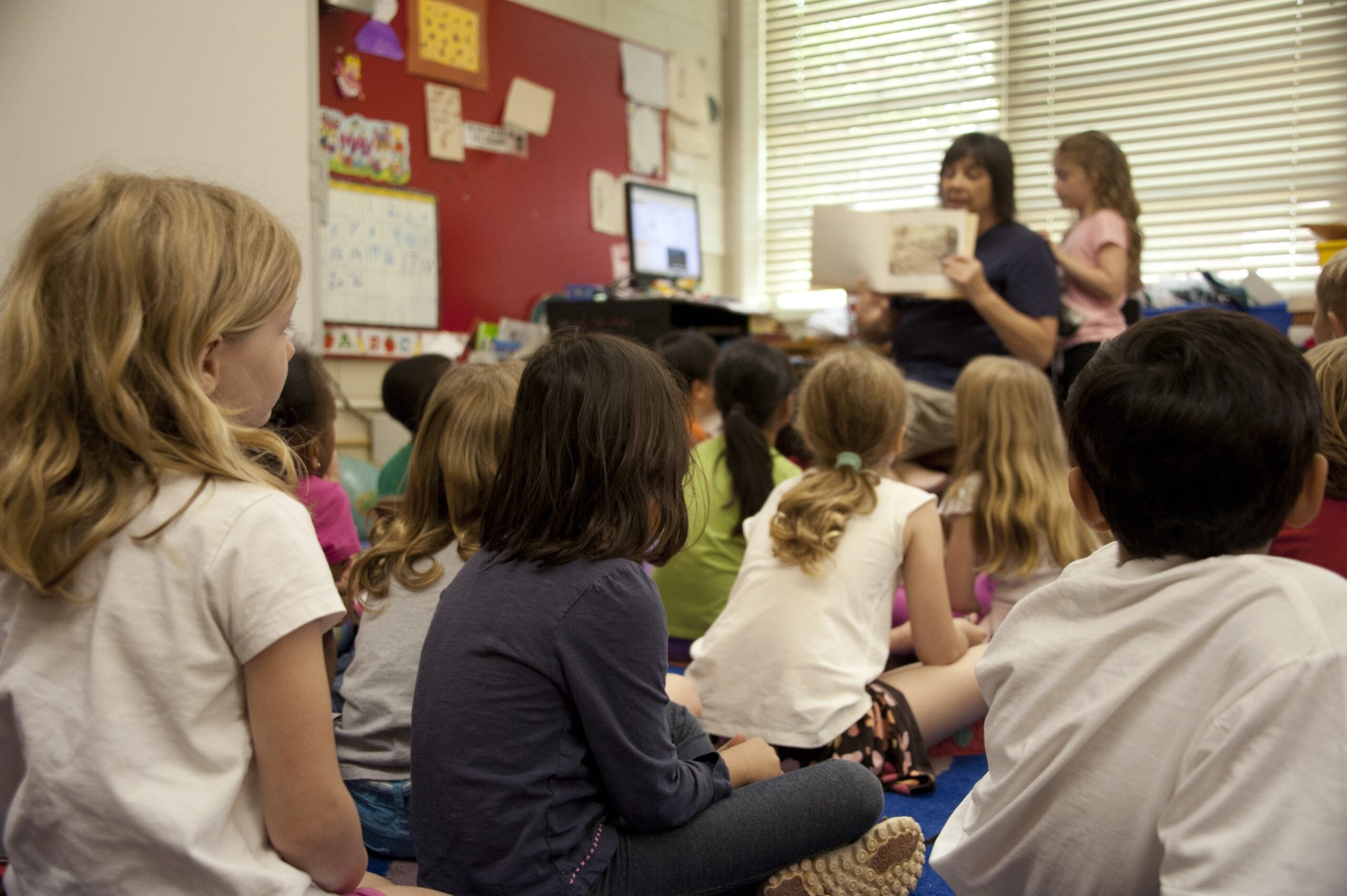Freshman Year
Fall 1994
Entry 1 -- Ms. Gruwell
Dear Diary, Tomorrow morning, my journey as an English teacher officially begins. Since first impressions are so important, I wonder what my students will think about me. Will they think I'm out of touch or too preppy? Or worse yet, that I'm too young to be taken seriously? Maybe I'll have them write a journal entry describing what their expectations are of me and the class.
Even though I spent last year as a student teacher at Wilson High School, I'm still learning my way around the city. Long Beach is so different than the gated community I grew up in. Thanks to MTV dubbing Long Beach as the "gangsta-rap capital" with its depiction of guns and graffiti, my friends have a warped perception of the city, or L B C as the rappers refer to it. They think I should wear a bulletproof vest rather than pearls. Where I live in Newport Beach is a utopia compared to some of neighborhoods seen in a Snoop Doggy Dogg video. Still, TV tends to blow things out of proportion.
The school is actually located in a safe neighborhood, just a few miles from the ocean. Its location and reputation make it desirable. So much so that a lot of the students that live in what they call the "'hood" take two or three buses just to get to school every day. Students come in from every corner of the city: Rich kids from the shore sit next to poor kids from the projects . . . there's every race, religion, and culture within the confines of the quad. But since the Rodney King riots, racial tension has spilled over into the school.
Due to busing and an outbreak in gang activity, Wilson's traditional white, upper-class demographics have changed radically. African Americans, Latinos, and Asians now make up the majority of the student body.
As a student teacher last year, I was pretty naive. I wanted to see past color and culture, but I was immediately confronted by it when the first bell rang and a student named Sharaud sauntered in bouncing a basketball. He was a junior, a disciplinary transfer from Wilson's crosstown rival, and his reputation preceded him. Word was that he had threatened his previous English teacher with a gun (which I later found out was only a plastic water gun, but it had all the makings of a dramatic showdown). In those first few minutes, he made it brutally clear that he hated Wilson, he hated English, and he hated me. His sole purpose was to make his "preppy" student teacher cry. Little did he know that within a month, he'd be the one crying.
Sharaud became the butt of a bad joke. A classmate got tired of Sharaud's antics and drew a racial caricature of him with huge, exaggerated lips. As the drawing made its way around the class, the other students laughed hysterically. When Sharaud saw it, he looked as if he was going to cry. For the first time, his tough facade began to crack.
When I got a hold of the picture, I went ballistic. "This is the type of propaganda that the Nazis used during the Holocaust," I yelled. When a student timidly asked me, "What's the Holocaust?" I was shocked.
I asked, "How many of you have heard of the Holocaust?" Not a single person raised his hand. Then I asked, "How many of you have been shot at?" Nearly every hand went up.
I immediately decided to throw out my meticulously planned lessons and make tolerance the core of my curriculum.
From that moment on, I would try to bring history to life by using new books, inviting guest speakers, and going on field trips. Since I was just a student teacher, I had no budget for my schemes. So, I moonlighted as a concierge at the Marriott Hotel and sold lingerie at Nordstrom. My dad even asked me, "Why can't you just be a normal teacher?"
Actually, normalcy didn't seem so bad after my first snafu. I took my students to see Schindler's List in Newport Beach, at a predominately white, upper-class theater. I was shocked to see women grab their pearls and clutch their purses in fear. A local paper ran a front-page article about the incident, describing how poorly my students were treated, after which I received death threats. One of my disgruntled neighbors had the audacity to say, "If you love black people so much, why don't you just marry a monkey?"
All this drama and I didn't even have my teaching credentials yet. Luckily, some of my professors from University of California-Irvine read the article and invited my class to a seminar by the author of Schindler's List, Thomas Keneally. Keneally was so impressed by my students that a few days later we got an invitation to meet Steven Spielberg at Universal Studios. I couldn't believe it! The famous director wanted to meet the class that I had dubbed "as colorful as a box of Crayola crayons" and their "rookie teacher who was causing waves." He marveled at how far these "unteachable" students had come as a junior class and what a close group they had become. He even asked Sharaud what "we" were planning to do next year as an encore. After all, if a film does well, you make a sequel--if a class surpasses everyone's expectations, you . . .
. . . dismantle it! Yep, that's exactly what happened. Upon my return from Universal, the head of the English department told me, "You're making us look bad." Talk about bursting my bubble! How was I making them look bad? After all, these were the same kids that "wouldn't last a month" or "were too stupid" to read advanced placement books.
She went on to say, "Things are based on seniority around here." So, in other words, I was lucky to have a job, and keeping Sharaud and his posse another year would be pushing the envelope. Instead, I'd be teaching freshmen--"at risk" freshmen. Hmm . . . not exactly the assignment I was hoping for.
So, starting tomorrow, it's back to the drawing board. But I'm convinced that if Sharaud could change, then anyone can. So basically, I should prepare myself for a roomful of Sharauds. If it took a month to win Sharaud over . . . I wonder how long it's gonna take a bunch of feisty fourteen-year-olds to come around?
Copyright © 1999 by The Freedom Writers with Erin Gruwell. All rights reserved. No part of this excerpt may be reproduced or reprinted without permission in writing from the publisher.

